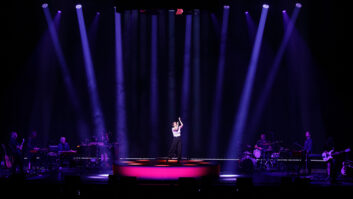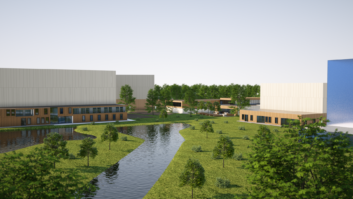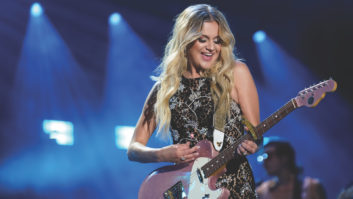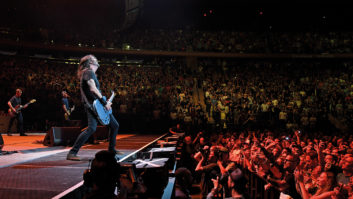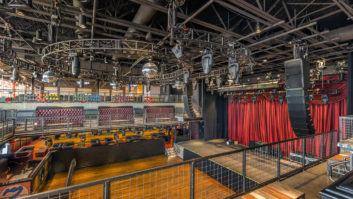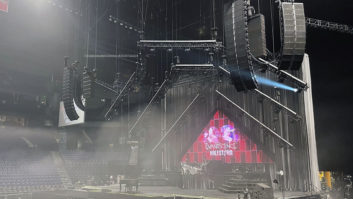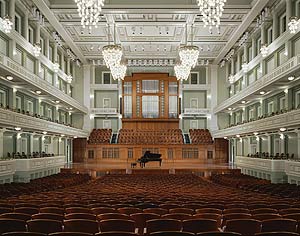
The streets of Nashville are lined with intimate venues that host a wide range of artists wanting to be seen — and heard — as they showcase their talent for an approving audience while hoping to make a business deal or two. This is Music City, after all. On the flip side, Nashville is also home to much larger venues, where multi-Platinum artists regularly make stops on their world tours. In addition, the locals can be found taking in the sounds of the symphony or opera, catching the latest hockey game or stopping in at a local club to check out local bluegrass or country acts. Here’s a guided tour of some of Nashville’s finest live performance facilities.
SCHERMERHORN SYMPHONY CENTER
Schermerhorn Symphony Center — home to the Nashville Symphony — sees more than 100 classical, pops and special concert events each season. Its shoebox-designed, 1,844-seat Laura Turner Concert Hall features natural interior light through 30 special soundproof windows. An automated system of movable banners and panels located around the hall provides adjustable acoustics. For the pops concerts and client events, gear includes a JBL 4887 line array with EAW JF80, UB82 and UB12 units; amps include Crown CTS Series. At FOH sits a Digidesign D-Show console with BSS London Blu-80 processing. For classical concerts, four EAW DSP speakers are on the organ case for general voice reinforcement with an under-balcony system and a small Midas Venice board.

RYMAN AUDITORIUM
The venerable Ryman first opened in 1892. With the coming of the Grand Ole Opry show in 1943, the Ryman became the hub of country music. In 1974, the Opry moved to its current home by the Gaylord Opryland Resort and Convention Center and left the Ryman vacant. It was not until 20 years later that the Ryman was restored with the help of an $8.5 million renovation by Gaylord Entertainment. At FOH stands a Yamaha PM5DRH Version 2, including a MY8-ADDA96 card and the Wave Effects program slot card with Apogee Big Ben clocking. The P.A. comprises JBL VerTec 4888 (L/R), 4880 (center), 5332-64 (balcony side), 4887 (deck speakers), Marquís MS26 (front-fills and extreme under-balcony) and 4212-64 (under-balcony). All speakers are powered by Crown amps, with speaker management handled by a wireless Lake Contour system. At monitor world is a Yamaha PM5D and Clair Bros. 12 AM wedges. An audio recording room has a 56-channel Amek Langley recall console, a Mackie CR1604 submixer, dbx comps, Yamaha REV7 reverb, JVC DAT machine, Denon cassette decks and Electro-Voice Sentry 100A monitors. Also in the room is a dual 2GHz AMD 64-bit PC with 16GB memory running Steinberg Nuendo 2.1.

TENNESSEE PERFORMING ARTS CENTER
The Tennessee Performing Arts Center (TPAC), located in the James K. Polk Cultural Center, includes four performance spaces: Andrew Jackson Hall (2,472 seats), James K. Polk Theater (1,075; pictured), Andrew Johnson Theater (256) and War Memorial Auditorium (1,661). In addition to being home for the Nashville Ballet, Nashville Opera Association and Tennessee Repertory Theatre, TPAC also presents a series of Broadway shows and special engagements, and administers an education program. The James K. Polk Theater features a Meyer center cluster with three UPA-2C cabs fed from a single processor and two UPA-1C cabs mounted on the second beam with a separate processor. Each zone is delayed and EQ’d separately. Crown amps are used throughout. A Yamaha PM3500-44 sits in the control room on the orchestra level.
SOMMET CENTER
In 2006, Durrell Sports Audio Management (Nashville) announced a $500,000 audio upgrade and seven-year responsibility contract for the Gaylord Entertainment Center, now known as Sommet Center. The new system comprises 12 main cluster hangs within the bowl of D.A.S. self-powered Aero 38 line arrays and Aero 218 hard-mounted subs; amps are QSC CX-1102 and CX-1202V. The new control room has a Soundcraft MH-4 48-input console. Audix wireless mic systems are used throughout the 19,000-plus-seat facility, which is also home to the Nashville Predators (NHL) and regularly sees top acts performing to sold-out crowds.
BOURBON STREET BLUES & BOOGIE BAR
In downtown Nashville’s historic Printers Alley sits Bourbon Street Blues and Boogie Bar, which has hosted a who’s who of fine blues players. Patrons enjoy the full dining selection while listening to the house band; Stacy Mitchhart recently left that band to concentrate on touring and his recording career, but is being kept in full rotation. On the gear side, a Spirit 32 board sits at FOH, complemented by BSS FCS966 and Lexicon LXP-3 processors. The P.A. comprises Electro-Voice Delta Max (upstairs house) and QRx 115 (downstairs); monitoring is via Electro-Voice 1502 and 1202 units, with all cabs custom redrivered with Eminence components. Amps are QSC and Behringer; the mic selection includes Shure, Sennheiser and AKG models.
NASHVILLE MUNICIPAL AUDITORIUM
Built in 1962, the Nashville Municipal Auditorium multipurpose facility was the city’s primary indoor sports and concert venue until the Sommet Center opened. It currently handles a multitude of events, including concerts, circuses, auto shows, trade shows and much more, including numerous religious events. The venue comprises a 9,654-seat arena and a 63,000-square-foot exhibition hall. The Electro-Voice speakers are constructed in a cluster at one end of the arena floor and the sound system is used for sporting events. At FOH sits a DDA CS3 board; processing complement includes Merlin ISP, Klark Teknik DN8000 and E-V EQ and crossovers.
